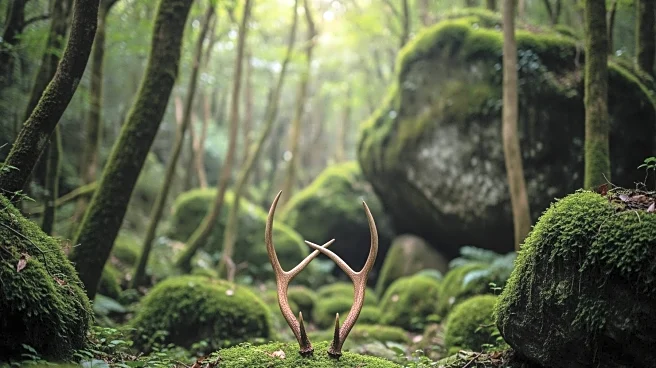What's Happening?
A viral video has brought attention to the shoebill bird, known for its prehistoric appearance, as it landed on a boat in Africa's Mabamba Swamp. The shoebill, with its large bill, is often compared to dinosaurs
due to its distinctive features. Canadian paleontologist François Therrien explains that birds are descendants of small meat-eating dinosaurs that survived the mass extinction at the end of the Cretaceous period. The shoebill's resemblance to dinosaurs is attributed to its unique beak and head structure, similar to the bony helmets found on some meat-eating dinosaurs. The shoebill can reach a height of five feet and is found in freshwater swamps in Africa. It is considered vulnerable due to habitat decline and hunting.
Why It's Important?
The shoebill's viral video highlights the ongoing fascination with creatures that resemble prehistoric animals, emphasizing the connection between modern birds and dinosaurs. This interest can drive conservation efforts for species like the shoebill, which are vulnerable due to environmental threats. Understanding the evolutionary lineage of birds can enhance public appreciation for biodiversity and the importance of preserving unique species. The shoebill's status as a vulnerable species underscores the need for habitat protection and sustainable practices to prevent further decline.
What's Next?
Conservationists may use the increased attention from the viral video to advocate for stronger protection measures for the shoebill's habitat. Efforts to raise awareness about the shoebill's vulnerability could lead to increased funding and support for conservation programs. Additionally, zoos in the United States, such as ZooTampa and the Houston Zoo, may see a rise in visitors interested in viewing shoebills, potentially boosting educational outreach and conservation funding.
Beyond the Headlines
The shoebill's resemblance to dinosaurs serves as a reminder of the evolutionary history shared by birds and dinosaurs, offering insights into the adaptability and survival of species over millions of years. This connection can inspire educational initiatives that explore the evolutionary processes that have shaped the diversity of life on Earth. The shoebill's unique features also highlight the importance of preserving genetic diversity within ecosystems, which is crucial for resilience against environmental changes.













